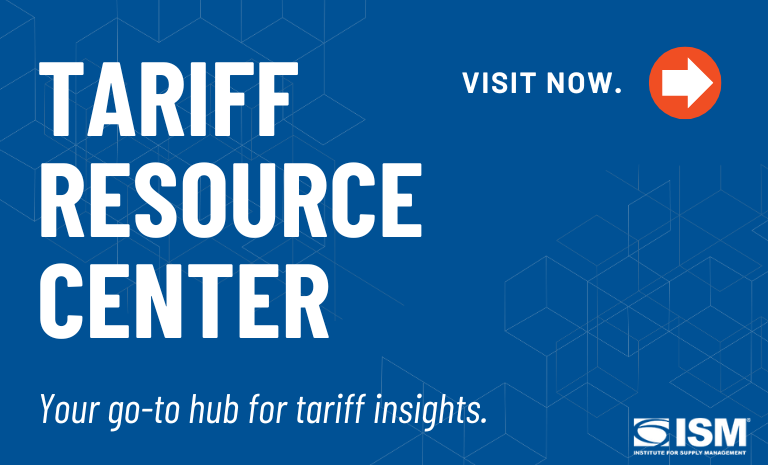Confidence: The Supply Chain Descriptor That Matters

Supply management organizations have long sought to be resilient and agile in their approach to supply chain disruption. Having confidence is emerging as a third trait — forming an interconnected triad.
“Companies that effectively manage their supply chains possess high confidence in their ability to handle disruptions,” states a new research report from GS1 US. GS1 is a not-for-profit, global data standards organization.
According to Powering Supply Chain Confidence: The Role of Data and Standardization, which surveyed 500 supply chain professionals across five industries in companies of all sizes, “They are better equipped to adapt quickly to market changes, reduce operational risks, and maintain continuous business operations.”
With all the volatility and uncertainty about tariffs, the economy and other disruption, the concept of supply chain confidence may sound difficult or even impossible to achieve.
“Confidence is absolutely possible, but it must be earned,” says Melanie Nuce-Hilton, senior vice president of customer success at GS1 US. “This research shows that most organizations are either highly or moderately confident in their ability to manage disruptions. That confidence is closely tied to how well they’ve invested in real-time visibility, agility and data-driven operations.”
She continues: “Confidence today doesn’t mean having all the answers; it means building the capabilities to respond effectively to whatever challenges arise.”
What Respondents Said
When asked which aspects of the supply chain they manage well, 65 percent of survey respondents say they are highly confident in their ability to manage disruption, while 35 percent say they are moderately so, according to the report.
Half reported they adequately maintaining the right amount of products on shelves, in inventory or in safety stock. Fifty percent also said they did well at managing supply chain agility.
Among other report findings:
- Two-thirds (68 percent) of respondents say innovation drives agility and visibility
- Half say they do a good job at producing the right product documentation when asked
- Forty-three percent say they still lack full visibility into their supply chains
- Only one in five (19 percent) have fully automated processes
- Nearly all (99 percent) consider sustainability to be “very important” or “important,” however, only half have implemented “concrete sustainability practices.”
Data and Standardization
Based on how supply chain leaders are responding to disruption, Nuce-Hilton says, “It’s clear that confidence is built on three pillars: visibility, agility and trust. Data is the foundation that supports all three, but only if it’s accurate, real-time and consistently shared across the supply chain.”
Two-thirds (68 percent) of respondents say centralized real-time data management is essential for data accuracy, according to the report.
“In contrast, only 51 percent of companies with moderate confidence and 25 percent of those with low confidence report the same level of trust in their data,” the report states. “Despite these clear benefits, 44 percent of organizations overall still lack a centralized data management system, potentially undermining their ability to respond effectively to supply chain disruptions …”
Standardization plays a critical role because it ensures that data isn’t siloed, misinterpreted or delayed as it moves between partners, Nuce-Hilton says. A standardized approach to how products, locations and transactions are identified and shared creates a common framework for collaboration and decision-making, she says. It helps organizations act faster, with greater precision, especially during disruptions.
“Disruption thrives on fragmentation,” she says. “Standardization, by contrast, creates alignment. For example, GS1 standards equip organizations with a shared language for products, locations and transactions, she says. This simplifies partner collaboration, improves traceability and accelerates decision-making.
“Our findings show that companies fully adopting GS1 standards report improved traceability capabilities, a critical step towards building agility and visibility, both of which are the key to managing disruption in real time,” she says.
Actions to Take
With supply chains experiencing so much disruption, companies can’t afford to be reactive. “Building true supply chain confidence — the ability to adapt quickly, collaborate seamlessly, and navigate complexity — requires proactive, deliberate action,” Nuce-Hilton says.
Organizations must prioritize three critical steps, she says:
1) Centralize and standardize their supply chain data to improve trust and collaboration
2) Invest in automation and real-time visibility tools to enhance agility
3) Foster stronger alignment with trading partners, recognizing that no supply chain operates in isolation.
“Supply chains today are under more pressure than ever before, from regulatory demands to shifting consumer expectations,” Nuce-Hilton says. “Confidence isn’t about eliminating risk. It’s about building systems that allow organizations to adapt, pivot and lead through uncertainty.”
Data, innovation, and collaboration — underpinned by global standards — are the levers companies must pull to power the next generation of supply chain success, she says.

